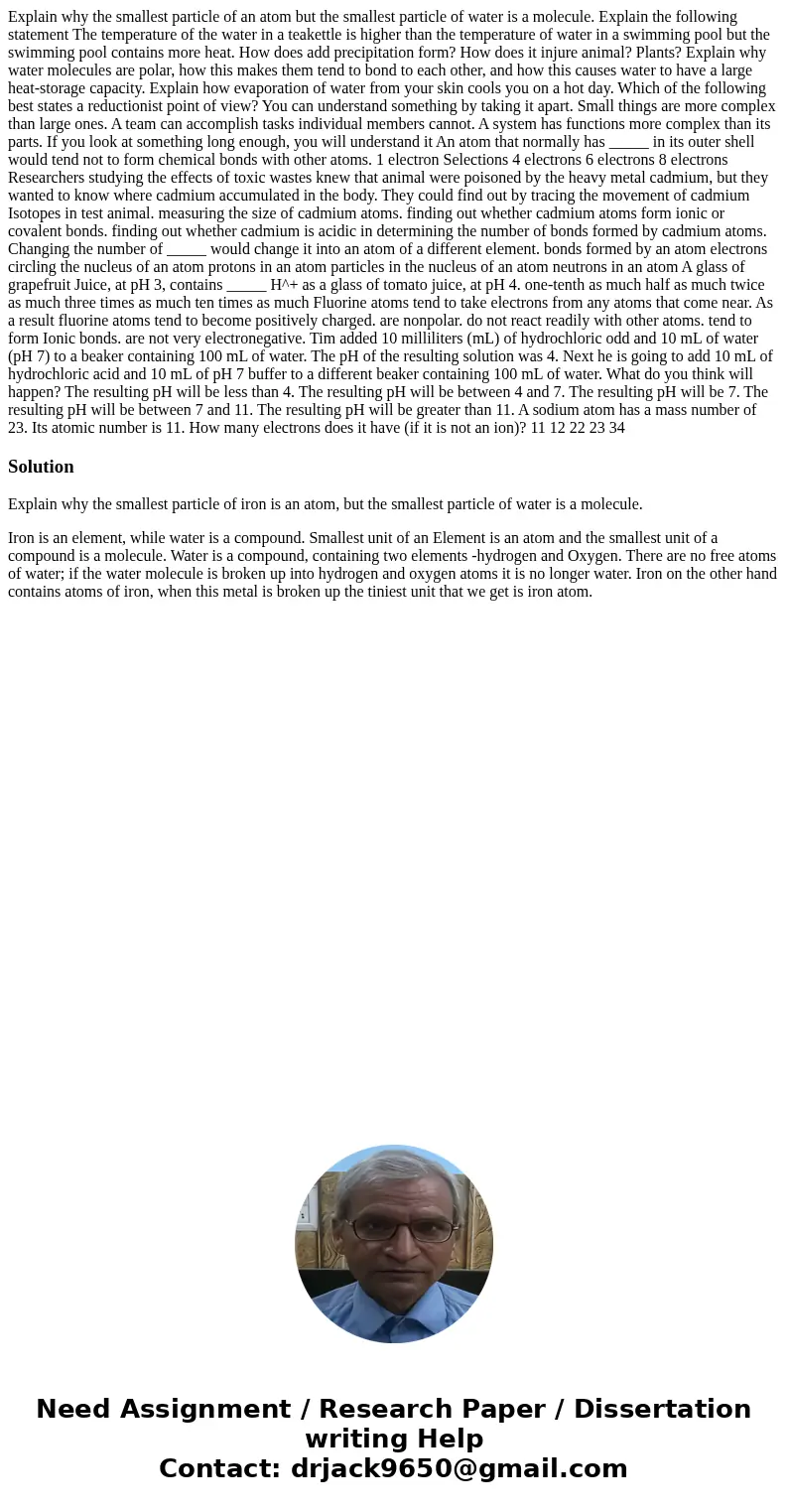Explain why the smallest particle of an atom but the smalles
Explain why the smallest particle of an atom but the smallest particle of water is a molecule. Explain the following statement The temperature of the water in a teakettle is higher than the temperature of water in a swimming pool but the swimming pool contains more heat. How does add precipitation form? How does it injure animal? Plants? Explain why water molecules are polar, how this makes them tend to bond to each other, and how this causes water to have a large heat-storage capacity. Explain how evaporation of water from your skin cools you on a hot day. Which of the following best states a reductionist point of view? You can understand something by taking it apart. Small things are more complex than large ones. A team can accomplish tasks individual members cannot. A system has functions more complex than its parts. If you look at something long enough, you will understand it An atom that normally has _____ in its outer shell would tend not to form chemical bonds with other atoms. 1 electron Selections 4 electrons 6 electrons 8 electrons Researchers studying the effects of toxic wastes knew that animal were poisoned by the heavy metal cadmium, but they wanted to know where cadmium accumulated in the body. They could find out by tracing the movement of cadmium Isotopes in test animal. measuring the size of cadmium atoms. finding out whether cadmium atoms form ionic or covalent bonds. finding out whether cadmium is acidic in determining the number of bonds formed by cadmium atoms. Changing the number of _____ would change it into an atom of a different element. bonds formed by an atom electrons circling the nucleus of an atom protons in an atom particles in the nucleus of an atom neutrons in an atom A glass of grapefruit Juice, at pH 3, contains _____ H^+ as a glass of tomato juice, at pH 4. one-tenth as much half as much twice as much three times as much ten times as much Fluorine atoms tend to take electrons from any atoms that come near. As a result fluorine atoms tend to become positively charged. are nonpolar. do not react readily with other atoms. tend to form Ionic bonds. are not very electronegative. Tim added 10 milliliters (mL) of hydrochloric odd and 10 mL of water (pH 7) to a beaker containing 100 mL of water. The pH of the resulting solution was 4. Next he is going to add 10 mL of hydrochloric acid and 10 mL of pH 7 buffer to a different beaker containing 100 mL of water. What do you think will happen? The resulting pH will be less than 4. The resulting pH will be between 4 and 7. The resulting pH will be 7. The resulting pH will be between 7 and 11. The resulting pH will be greater than 11. A sodium atom has a mass number of 23. Its atomic number is 11. How many electrons does it have (if it is not an ion)? 11 12 22 23 34
Solution
Explain why the smallest particle of iron is an atom, but the smallest particle of water is a molecule.
Iron is an element, while water is a compound. Smallest unit of an Element is an atom and the smallest unit of a compound is a molecule. Water is a compound, containing two elements -hydrogen and Oxygen. There are no free atoms of water; if the water molecule is broken up into hydrogen and oxygen atoms it is no longer water. Iron on the other hand contains atoms of iron, when this metal is broken up the tiniest unit that we get is iron atom.

 Homework Sourse
Homework Sourse